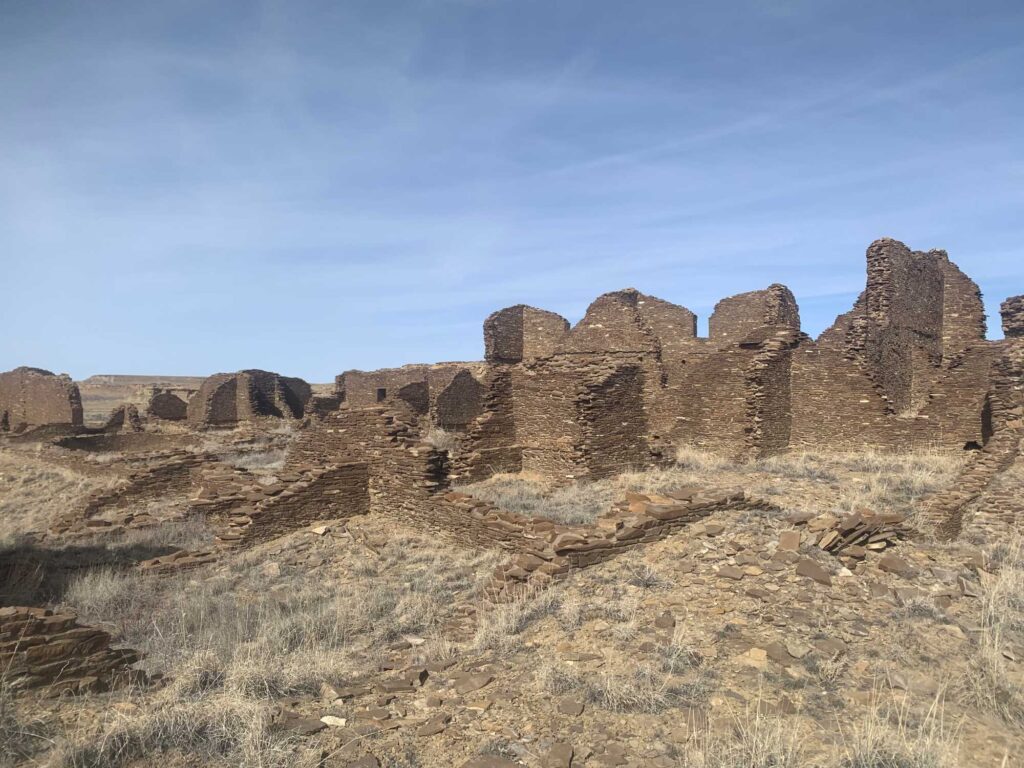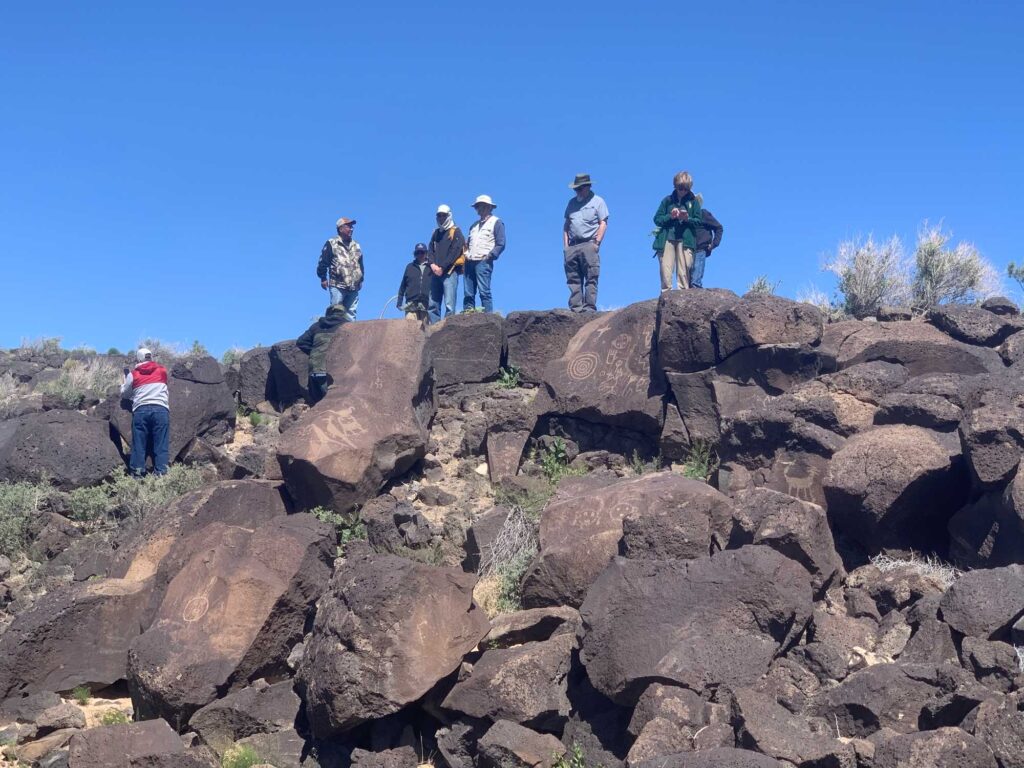- Home
- >
- Preservation Archaeology Blog
- >
- My First Several Months at Archaeology Southwest
(June 3, 2024)—Hello, all! I am a relatively new employee here at Archaeology Southwest. This is my first blog post to introduce myself and talk about what I have been up to during my first several months with the organization. My background is primarily in private Cultural Resource Management, some nonprofit work, and seasonal work for the National Park Service (NPS). This is my second time working for Archaeology Southwest. I previously served as the archaeological survey instructor for the 2022 Preservation Archaeology Field School.
I was hired this past January to work with Paul Reed and the New Mexico. I felt fortunate to return to the organization as a Preservation Archaeologist based in northwest New Mexico, an area with such a rich history. One of the first projects I have begun working on is an Archaeological Overview and Assessment for Chaco Culture National Historical Park and Aztec National Monument. Once completed, the document will summarize archaeological projects conducted at Chaco, from the early Hyde Exploring Expedition to the most recent reexamination of the Diné presence at Chaco. Another project I have worked on in these first several months is contributing to a Cultural Landscape Inventory focused on the Navajo Settlement Landscape at Chaco Canyon. I’ve read so much about Chaco over the last few months that I’m certain I have a light dusting of sand coming out of my ears!

Working with Paul, I have visited Petroglyph National Monument (PETR) several times as part of the process involved with creating an Indigenous Cultural Landscape Report (ICLR) for the National Park Service (NPS). During a recent visit, we attended a meeting where the Archaeology Southwest team presented aspects of the Part I report for the ICLR. Attendees included Tribal representatives from 10 Pueblos and Tribes, including several Tribal Historic Preservation Officers, Albuquerque Open Space employees, and NPS staff from PETR and the Regional office. The group represented a variety of backgrounds and skills and provided several helpful management recommendations.
PETR faces unique problems due to its location on the edge of a large municipality, the city of Albuquerque. The interaction with Pueblos and Tribes during this meeting ties directly into two important components of our organization’s Model for Tribal Collaboration, published this last year. These meetings help build and foster relationships between different land managers and both Tribal governments and cultural offices. Relationships form the foundation of all collaborative projects. Sharing stories and different knowledge about the landscape over a bowl of green chile stew serves as an example of reciprocity. Meetings like these are only possible if we have partners like PETR who will allocate precious funding for these events and take the action needed to plan and execute.

In his recent Archaeology Café lecture, Dr. Michael Kotutwa Johnson tells us “Indigenous peoples protect 80% of global biodiversity, on 25% of the planet’s land, with less than 5% of the world’s population.” Indigenous communities are stewards of a significant amount of global biodiversity, and landscapes are only as healthy as the sum of their parts. Land managers at all levels are consulting with Indigenous communities for management input. As archaeologists, we have a responsibility to include Tribal representatives in all levels of research and decision-making processes for our shared public lands. Archaeology Southwest’s Tribal Collaboration Model provides a unique tool for thinking about collaborative projects and includes several important considerations when planning projects.
Archaeology Southwest is in a unique position to protect landscapes and facilitate collaboration and co-management of lands between Indigenous communities and land managers. We serve as a middle ground, using our relationships with Tribal governments and federal agencies to facilitate between land managers and Tribal entities.
The final part of our Tribal Collaboration Model is Action. Sometimes major action is needed in the preservation of landscapes and cultural sites. In several instances, our organization has taken substantive action to protect cultural and natural resources. I feel fortunate to work for an organization that uses our position to advocate for the protection of cultural landscapes. As we look to protect sacred and significant sites, we are increasingly aware that point-by-point cultural resource site protections within certain cultural landscapes are not adequate, and we see an increasing need for landscape-level protection and study.